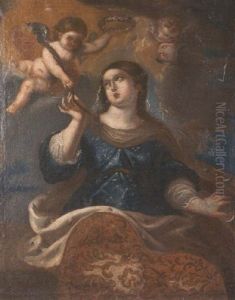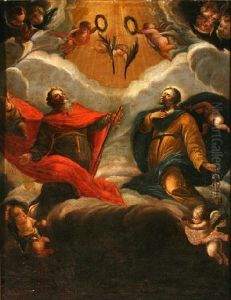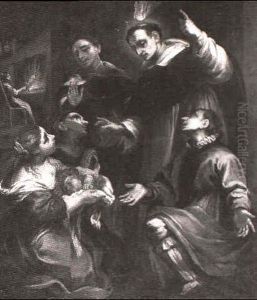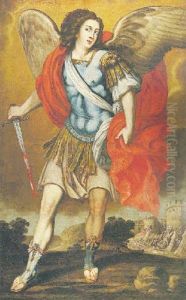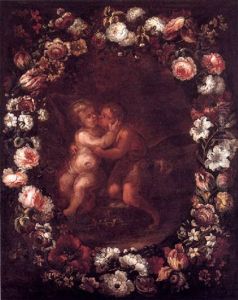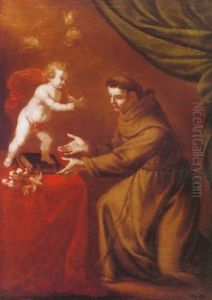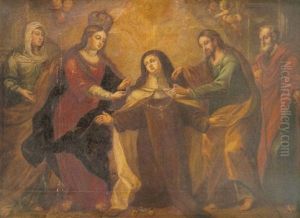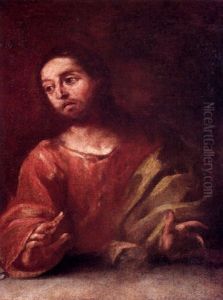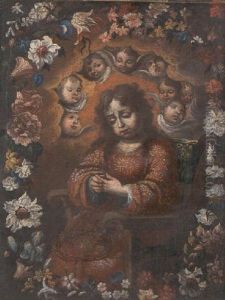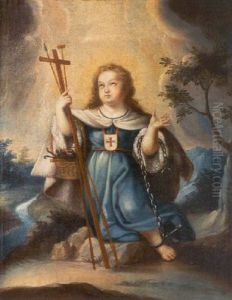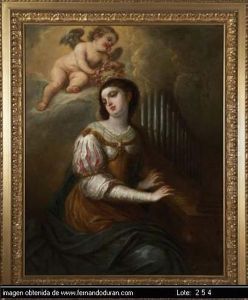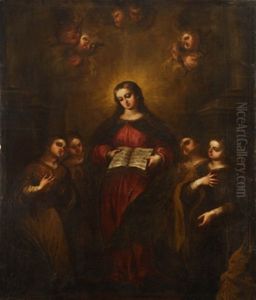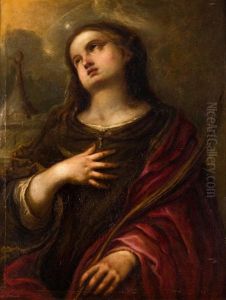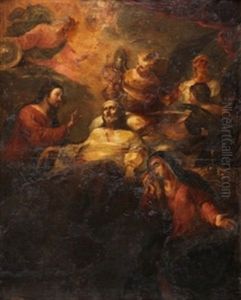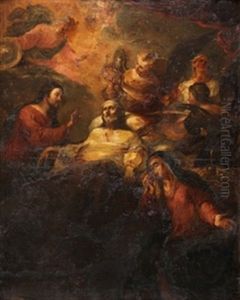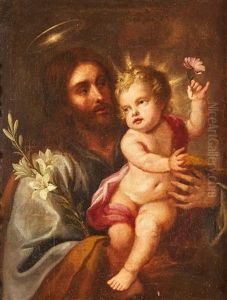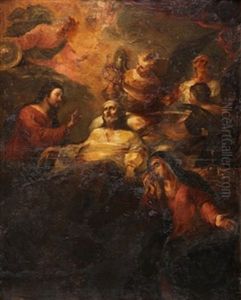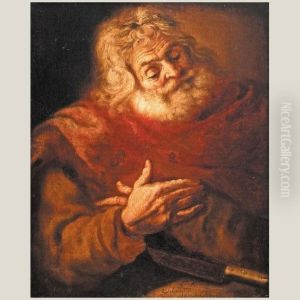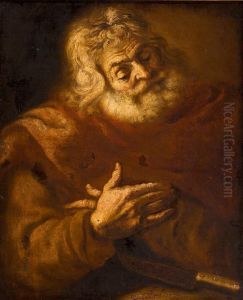Vicente Berdusan Paintings
Vicente Berdusan was a Spanish Baroque painter, born in 1632 in Sos del Rey Católico, a town in the province of Zaragoza, in the region of Aragon. Not much is known about his early life or training, but it is believed that he may have been a pupil or follower of the Spanish painter Francisco de Zurbarán, as his style bears a close resemblance to that of the master. Berdusan is known for his religious works, which often featured intense chiaroscuro and a strong tenebrist approach, a style that emphasizes dramatic contrasts of light and shadow, much like that of Caravaggio and his followers.
Berdusan's work was primarily focused on altarpieces and other religious commissions for churches and convents. His compositions frequently depicted scenes from the life of Christ, the Virgin Mary, and the saints, executed with a deep sense of piety and devotion. Though his works were largely confined to the Aragon region, they contributed significantly to the religious and artistic landscape of the area during the second half of the 17th century.
One of his most notable works is the main altarpiece of the collegiate church of Borja, which is considered one of the most important pieces of Aragonese Baroque art. Unfortunately, compared to other artists of his time, Berdusan did not enjoy widespread fame, and as a result, his works are not as well-known or as extensively studied as those of his contemporaries.
Vicente Berdusan died in 1697 in Zaragoza. Despite the relative obscurity of his name in the broader context of European art history, his contributions to the Baroque movement within Spain, particularly in Aragon, have been recognized and appreciated by scholars and art enthusiasts who specialize in this period and region.
